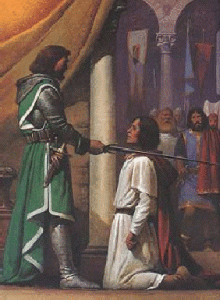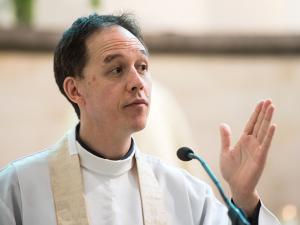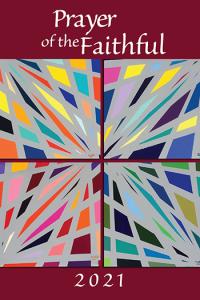Celebrations of Grace: The Sacraments of the Catholic Church, Part 3
A reflection on the mystery of the sacraments can be about an entire world of mystery as well. The way we do sacraments expresses our understanding of the world and our place in it. Now, many years after the Second Vatican Council, you can read in the new shape of the Church’s sacramental celebrations an understanding of the world that we live in.
You can contrast that with the understanding that the Church’s public worship seemed to support before the changes that the Council brought. “Seemed” is an important word. I think the liturgy changed more than the Church’s theology.
Catholics always saw Christ’s action in the sacraments as pouring grace out into the world. To that picture the renewed liturgy makes a remarkable addition: the world itself is a place of grace. In the sacraments we celebrate the grace that God gives all the time and everywhere. This graced world is not a new idea in theology, but it’s a new thing for the Church’s liturgy to show it clearly.
Catholics also always knew that the world is a place of sin. Liturgy challenges the sin of the world, and the new shape of the liturgy makes that challenge clearer than before.
The work of the people
I have known and loved the Catholic sacraments before and after the Second Vatican Council. I knew a sense of mystery in the Latin Mass enacted on a distant high altar. But even before the Council the Church saw that it wasn’t enough. The people had to participate. Of course, interior disposition and understanding were important.
Our teachers in Catholic elementary school had already made sure we could follow the priest’s prayers in our English missals. We knew, or thought we knew, what was happening at every moment. Later, congregational singing became important, although often tentative and meek. But our parts were like decorations or teaching aids or prayer aids added to the real mystery. Then came the council, and we watched as the Church took one step after another toward fully integrating the whole assembly into an all-English liturgy in the literal meaning of that word: Liturgy means “work of the people.”
The larger mystery
Liturgy feels less mysterious than before since we have realized that liturgy is our work. But mystery is an even larger part of Christian life and worship. More than a presence hidden on a distant altar or under the forms of bread and wine, the mystery is a work in the midst of people. Our work is God’s work. Liturgy is brightly shining and close up. With its light we can see a dimension in ourselves and in our world that usually is hidden. God is present and active in our lives. Liturgy sends us into that mystery.
The sacramental light shining outward and what it can reveal about the graced, sinful world we live in is the guiding theme of these essays on the sacraments of the Catholic Church. I pay a lot attention to the grace that is before and around the sacraments. Sacraments are not the biggest parts of God’s grace, though of all graces they are the easiest to see.
Sacraments can teach us how to see more clearly. With their help a whole world of grace that we might easily miss can start catching our attention. I looked for the many ways sacraments can provide that help, and in doing so I found keys to greater understanding of the sacraments themselves. It’s not the only way, but it is one way of getting to the meaning and mystery of the sacraments. Each sacrament has its own message about graces God is always giving us.
I start the following meditations thinking about the sacraments in a general way. Then I look at the seven individual sacraments plus the sacrament of the visible Church and our relationship with Jesus, the original sacrament. After each section some questions invite you to “Think Again.”
You might also ask yourself:
- Do I agree or disagree with particular ideas in this post?
- Do I find a thought that challenges me to grow or change?
- What is missing that ought to be there?
We are not done with liturgical renewal when liturgists and church authorities have made their findings and decisions and all the decorations are in place and the rubrics down pat. Renewal happens every time priests, liturgical ministers, and committees work to make liturgy feel like a celebration of something and make the signs of the sacraments look like they mean something. Liturgical renewal happens also as people take another look at the mystery they are celebrating when they come to church. That includes the presence and work of God in their lives.
Image credit: A Desert Father via Google Images












